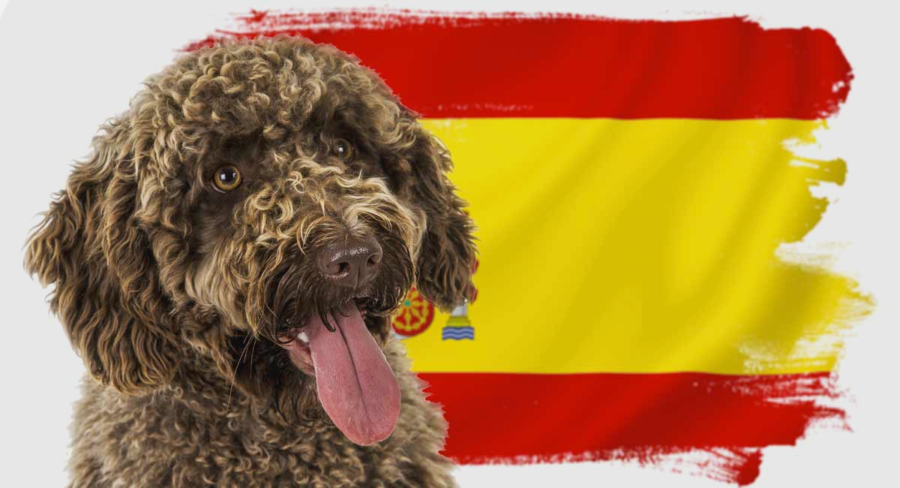Traveling internationally with a pet doesn’t always mean visiting a distant country for a week. Just as often as not, international pet travel is used for permanent or long-term relocation. Relocating to Spain, in particular, is becoming increasingly popular among Americans. While the Spanish pet relocation procedure is easier to complete than most, it still imposes significant challenges on pet owners who want to bring their furry friends along for the adventure. Compared to short-term domestic pet travel, pet relocation imposes an entirely new set of challenges and regulations, some of which may come as a surprise to many pet parents. We’ve investigated every aspect of this process and detailed our findings below.
Methods of Transport
In addition to many U.S. airlines that offer flights to Spain, Iberian Airlines is the major carrier in Spain with several routes to U.S. destinations. No matter where you’re leaving from, the most common departure cities for international travel into Spain include Boston, Chicago, Miami, New York, and Los Angeles. Aside from a private/chartered boat, the only way to move your pet to Spain is by plane, and their size, weight, and temperament will determine where in the plane they sit.
In-Cabin
This is the first-choice option for many pet parents, especially those with small animals. Most airlines will allow cats and small dogs to fly alongside their pet parents on international flights. However, the restrictions placed on these animals are a lot more severe than those who travel in the cargo hold. In most cases, the combined weight of the animal and its carrier cannot exceed 17lbs-20lbs, and the animal must be small enough to fit under the seat in front of you. Still, this option eliminates the stress of allowing others to handle the animal, and you won’t need to visit a cargo facility at your departing and destination locations. This is also the cheapest option, generally costing between $150 and $200 per pet, depending on the flight and airline.
- Bonus Tip: Some airlines require written notice regarding how you plan to handle bathroom emergencies on long-distance flights. This is something to consider if in-cabin transport is your first-choice option. Additionally, most airlines place limits on the number of animals allowed on each plane. Make your reservations as soon as possible to guarantee your spot.
Checked Baggage
While an increasingly rare pet transportation option in America, it appears that many European airlines prefer to fly larger animals as checked baggage. This option allows the pet owner and animal to fly aboard the same aircraft, but the parent flies in the cabin while the pet remains in the pressurized cargo hold. The process for flying as checked baggage is simple: the pet owner checks the animal in while they are checking into the flight, and airline personnel transports the animal to the aircraft. Then, on the other side of the flight, the pet owner collects the animal from a pre-determined location (usually oversized baggage claim or the regular baggage carousel, but this varies by airport and airline).
- Bonus Tip: Importantly, if you fly your pet as checked baggage, you will need to collect the animal before passing through customs. This will lengthen the time your animal is stuck in its cage, so it is important to locate potential pet relief areas at your destination airport. This option is not as cheap as in-cabin transport, as it will consider your pet’s size and weight, but it remains fairly affordable.

IAG Cargo Pet Transportation
While generally the most expensive option, IAG Cargo is also one of the more convenient animal cargo transport options for traveling to Spain. This company is the cargo handling arm of Iberian Airlines, as well as British Airways, Vueling, Aer Lingus, and LEVEL. They have extensive experience in transporting pets, having handled zoo animals for some of the best-known zoos and animal charities in the world. They have over 60 years of experience in live animal transport and a dedicated team of animal handlers. Importantly, IAG Cargo employs a “last on, first off” policy for the animals they transport, limiting the amount of noise and disruption your pet will experience.
IAG Cargo imposes a few limitations on the animals they transport. Some dangerous dog breeds and snub-nosed animals may no be accepted, but this is reviewed on a case-by-case basis. As with most animal transport, the price will depend on the crate dimensions and the combined weight of your pet and the container. This provider also allows pet parents to track their shipped animals through their website. IAG Cargo also provides a relocation service through a corporate partner.
Additionally, IAG Cargo recently announced the launch of enhanced animal handling services at Madrid-Barajas airport. Pets traveling through Madrid will receive a full veterinary check-up from a member of a 25-person team and consistent monitoring of food and water intake. If you are traveling through this airport, or if your pet arrives at the terminal before your flight gets in, this may come as a relief.
Additional Animal Transportation Services
In addition to booking with the airlines directly, you can work with a third-party transportation service. Full-service pet relocation cargo options take care of the documentation you need to transport your animal while providing door-to-door delivery. In many cases, the company will pick up your animal from home, transport it to Spain, and deliver it at a predetermined location. In some cases, doggy daycare can be arranged in Spain if you plan to fly out after your animal. This hands-off approach to pet relocation is very expensive (some quotes are as high as $2,500), which makes it an unviable option for most short-term stays. That said, some parents prefer the ease in order to focus on their own relocation.
Below, we’ve researched and detailed three of the best-known providers for shipping animals to Spain. All the companies below consider your pet’s size and weight before providing a price quote.
Relomar – This international pet transport service facilitates every part of the pet shipping process, including collection of the animal at its home, international transport, and delivery in the destination country. They handle A) the documentation necessary to fly and clear customs, B) check that the animal has the vaccines necessary in both the origin and destination countries, and C) provide a free price quote to all interested pet parents. Relomar will also pick up your pet at home, transport the animal, and deliver the animal to its owner at the destination address. You won’t need to drive to the airport, drop your pet off, or worry about the logistics of international pet travel.
Air Transport Animal – Air Transport Animal is a pet relocation service that prioritizes the shipping itself rather than the preparing. To fly your animal with this provider, you will need to obtain the necessary documentation yourself, including a pet passport, a vaccine record (and applicable vaccines), a health certificate, and a microchip. Their Premium Package provides door-to-door pet shipping and takes care of all bureaucratic processes on both ends of the trip. This provider is careful to note that the minimum time between the start of the process and the actual shipping is at least 2 months, so be sure to budget your time accordingly.
Starwood Animal Transport – This relocation company provides full-service transport, which means it handles door-to-door transport, assistance with all necessary pet documentation, USDA endorsement and consular legalization (if necessary), airline-approved kennels, local pet taxi, and travel consultation. Pet parents have the option for home pet delivery or to pick up their animal at the Madrid-Barajas Adolfo Suárez Airport. They provide both international and domestic pet relocation.
If none of these animal transportation companies fit your personal criteria, there are several tools you can use to find the service you need. This IPATA-certified animal transportation search tool is a great place to start. For more information about IATA pet travel regulations, we recommend visiting their website. If you find a provider through the organization’s animal transport search tool, you can rest assured that the company follows all IPATA animal regulations.
Animal Import Procedures to Know
When animals travel between countries, they are subjected to a variety of import rules and regulations. If you are transporting your animal from the United States to Spain, you will need to meet several requirements as outlined by the Ministry of Agriculture, Food, and Environment.
- Cats, dogs, and ferrets who are younger than 3 months are not allowed to enter the country. This is because they have not received rabies shots. An animal is only considered to be vaccinated against rabies 21 days after the first injection.
- All pets entering the European Union will be required to secure either a European Passport or a Health Certificate and Declaration of the owner or the authorized person. This health certificate must be signed by a USDA Accredited Veterinarian.
- All pets must have a valid (not expired) vaccination against rabies as demonstrated by a certificate. Upon arrival, the animal health inspector will need to verify that all documents, including the health certificate and declaration or passport, are correct.
- Pets must have some form of identification. The most popular is a microchip that complies with ISO Standards. Pets may also be identified by a tattoo if it is clearly readable and if it was applied before July 3, 2011.
- Importantly, your pet must receive its identification (microchip) prior to its rabies vaccination. The microchip must be checked before administering the vaccine.
As long as the above requirements are met, there will be no quarantine imposed on your pet. These regulations apply only to domestic dogs, cats, and ferrets. This includes both service and emotional support dogs and cats. All pets must be accompanied by their owners (or representatives if you choose a full-service relocation company).
The same health requirements that apply to pets also apply to service animals. Additionally, the maximum number of pets a person can bring is 5; if you would like to bring more than that, another set of regulations will apply. There are certain exceptions for dogs, cats, and ferrets that participate in contests, exhibitions, or sporting events.
Spanish Import Health Certificate Requirements
Health certificate requirements will vary depending on how your pet enters the country. All iterations of the health certificate are available for download at the United States Department of Agriculture, Animal and Plant Health Inspection Service website.
- Owner traveling on the same plane as the pet: Pets must arrive in the European Union within 10 days of the date the health certificate is signed.
- Designated person traveling on the same plane as the pet: Pets must arrive in the European Union within 10 days of the date the health certificate is signed.
- Pet Transport Company or Airline Cargo is shipping the pet AND the owner or designated person has traveled or will travel within 5 days of the pet: Pets must arrive in the European Union within 10 days of the date the health certificate is signed.
- Neither the owner nor a designated person is traveling within 5 days of the pet: Pets must leave the United States within 48 hours from the date a veterinarian signs the health certificate.
The health certificate itself is a simple form. It will require you to know information about your travel plans, including the departure/arrival dates and means of transport, as well as a full vaccination record and relevant health information. If you have a European Union pet passport, you do not need to fill out this health certificate. However, most pet parents traveling from America will find this health certificate easier to complete and receive than an EU passport.
Cost Estimates by Transport Method
Depending on the level of involvement and responsibility you want to have in the process, pet relocation can be relatively cheap or very expensive. For example, if you choose in-cabin transport for your pet relocation, the cost of your pet’s ticket will be between $150 and $200, depending on your airline. If you fly with Iberia, the cost is $180. Similarly, if you choose to fly your pet as checked baggage, the price will be between $350 and $400 (the cost is $360 on Iberia).
Choosing these lower price points means that you are responsible for securing all necessary documentation and understanding the import process on your own – you will have total responsibility for your pet and its relocation. Additionally, if you choose to fly your pet as checked baggage on an international flight, you voluntarily put your dog’s health and wellness in the hands of handlers who may not have much pet experience. While this varies by airline, most providers include clauses in their pet policies that remove any blame or responsibility from airline personnel in the case of an accident.
The safest and easiest method of pet relocation to Spain is to use a full-service relocation company. Unfortunately, this is the most expensive option, and it may be wildly out of budget for some Americans. If you utilize an airport to airport service, which means the pet is dropped off at an airport and picked up at the destination airport by the owner or representative, the cost is generally around $1,000. If you choose a full-service relocation, which includes pick-up and drop off by the business, as well as documentation and customs handling, the process can cost up to $2,500, depending on the size of your dog and distance moved. This high price point is typically a barrier to entry for most people, so be sure to discuss all potential options before settling on a decision.
Spain Pet Relocation Timeline
As with all forms of international relocation, moving a pet from one country to another takes a considerable amount of time. One animal transport service provided a quote saying that at least two months’ notice are necessary for a successful move from the United States to Spain, and this seems to be the standard. Between booking flights, securing the proper documentation, and leaping through all the necessary bureaucratic hurdles, this is a time-intensive process. Whether you choose to use a relocation company or want to handle the logistics on your own, start planning the trip at least two months before your desired departure. If you are unsure of your pet’s vaccination record, start the process even earlier.
If you choose to fly your pet without the use of a relocation company, remember that most airlines put limits on how many animals can be on a single plane. Whether you choose to fly your animal as checked baggage or with you inside the cabin, you will want to make your reservations as far in advance as possible. And, while it is important to be flexible with dates, this could drive up the price you end up paying for the process.
Upon Your Arrival
Sometimes, your destination airport may not be your terminus. Many pet parents, especially those with smaller dogs who have flown in the airplane cabin, will need to use Spanish transportation to get to their home or a hotel.
Most popular Spanish train lines are surprisingly pet friendly. This includes AVE, Large Distancia, Avant, Media Distancia, Convencional, Cercanías, and Feve trains on Renfe, the state-owned train system. If you plan to use this mode of transportation, you will be able to transport most small pets, including dogs, cats, ferrets, and some birds (excluding farmyard birds, like chickens). The Renfe pet policy states that all animals must travel with the documentation used for the flight and that only one animal per passenger is allowed. On most trains, the animal must be kept in a cage, but commuter rails only require a muzzle and a fixed-length lead. The pet must sit in your lap or at your feet to reduce the risk of annoying fellow passengers. Long-distance and conventional mid-distance trips require the purchase of a separate pet ticket, which is typically 25% of the standard passenger fee.
In Madrid, it seems that pets, dogs especially, are universally beloved. There are several areas in the city to let your dog roam off-leash while you dine or drink al fresco. Municipal buses allow owners to travel with their pets as long as they are inside an appropriate carrier and do not endanger or disturb other passengers. The majority of private taxis will also accept dogs if they are inside a carrier and the driver is notified in advance. There has also been a recent uptick in pet taxi companies, including eTaxi and Mascotaxi, that specialize in pet transport. If you are looking for transportation from Madrid Barajas International Airport, this is a great, private option.

Additional Spain Transportation Tips
Most of the information provided by the United States and Spanish governments deals with typical household pets, namely cats, dogs, and ferrets. Those traveling with other pets, including birds, rabbits, and reptiles will have a separate set of requirements.
Rabbits – A pet rabbit must travel accompanied by its owner or a representative. The pet rabbit must have been examined and issued a health certificate (by a USDA Accredited Veterinarian) within 5 days of leaving the United States. USDA endorsement (a counter-sign and emboss/stamp) is required on the health certificate after it is issued by the veterinarian. There is a separate international health certificate.
Reptiles – Pet reptiles must travel accompanied by an owner or a representative. The pet must have been examined and issued a health certificate (by a USDA Accredited Veterinarian) within 5 days of leaving the United States. USDA endorsement (a counter-sign and emboss/stamp) is required on the health certificate after it is issued by the veterinarian. There is a separate international health certificate for reptiles.
Birds – All pet birds must have an identification number, such as a clip, leg band, microchip, or tag. They must be moved directly to a household (or other residence) and not entered in shows, fairs, or exhibitions during the 30-day period following entry to the EU. Pet birds may also have to undergo isolation with or without testing for Avian Influenza before entering the EU. There are several options for preparing a bird to enter the EU, but all options require a health certificate to be issued by a USDA Accredited Veterinarian within 48 hours of travel (or the last working day prior to the date of departure).
- Option 1: The pet bird has been confined under an official USDA Accredited Veterinarian’s supervision for at least 30 days prior to the departure. It has had no contact with other birds. The instructions are listed here and the appropriate veterinary health certificate is linked here.
- Option 2: The bird was isolated for at least 10 days prior to the date of departure and tested for Avian Influenza H5 and H7 antigen or genome with a RT-PCR or virus isolation test at least three days after the start of the isolation. The day isolation begins is considered Day 0. The instructions are listed here and the appropriate veterinary health certificate is linked here.
- Option 3: The bird’s owner has made arrangements for a 30-day post-introduction quarantine in an approved quarantine facility or center within the EU. The instructions are listed here and the appropriate veterinary health certificate is linked here.
Cats, dogs, ferrets, rabbits, reptiles, and birds are the only animals for which the Spanish Ministry of Agriculture, Food and Environment has set processes. If you have another type of animal you would like to relocate to Spain, we recommend you contact the ministry directly to inquire.
Final Tips and Thoughts
While relocating a pet from the United States to Spain is increasingly popular, it’s still no small task. If you have the resources, using a full-service relocation company is the easiest and safest option, but not many people have the budget to pay for this premium service. Additionally, the timeline required by the Spanish Government makes it impossible to get too far ahead of the process.
That said, relocating a pet to Spain is possible, and people do it all the time. The resources and regulations of both U.S. and E.U. airlines make it among the best, safest types of international pet travel and relocation. Ultimately, the decision to relocate with a pet is up to you, but the process may be well-worth the effort to bring your best friend along for the journey.



